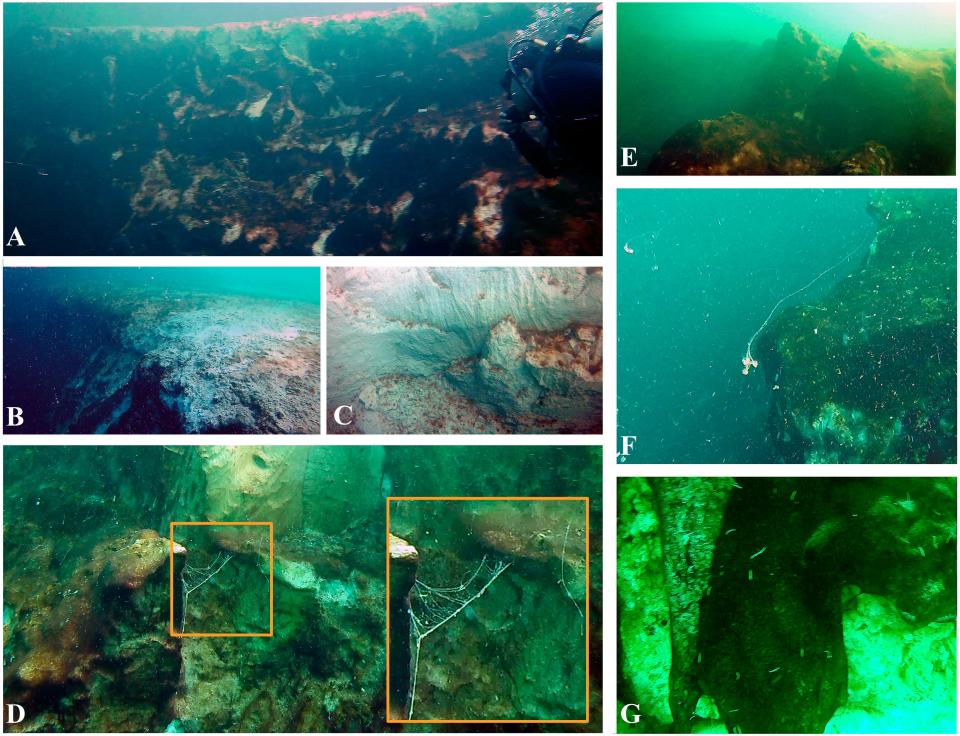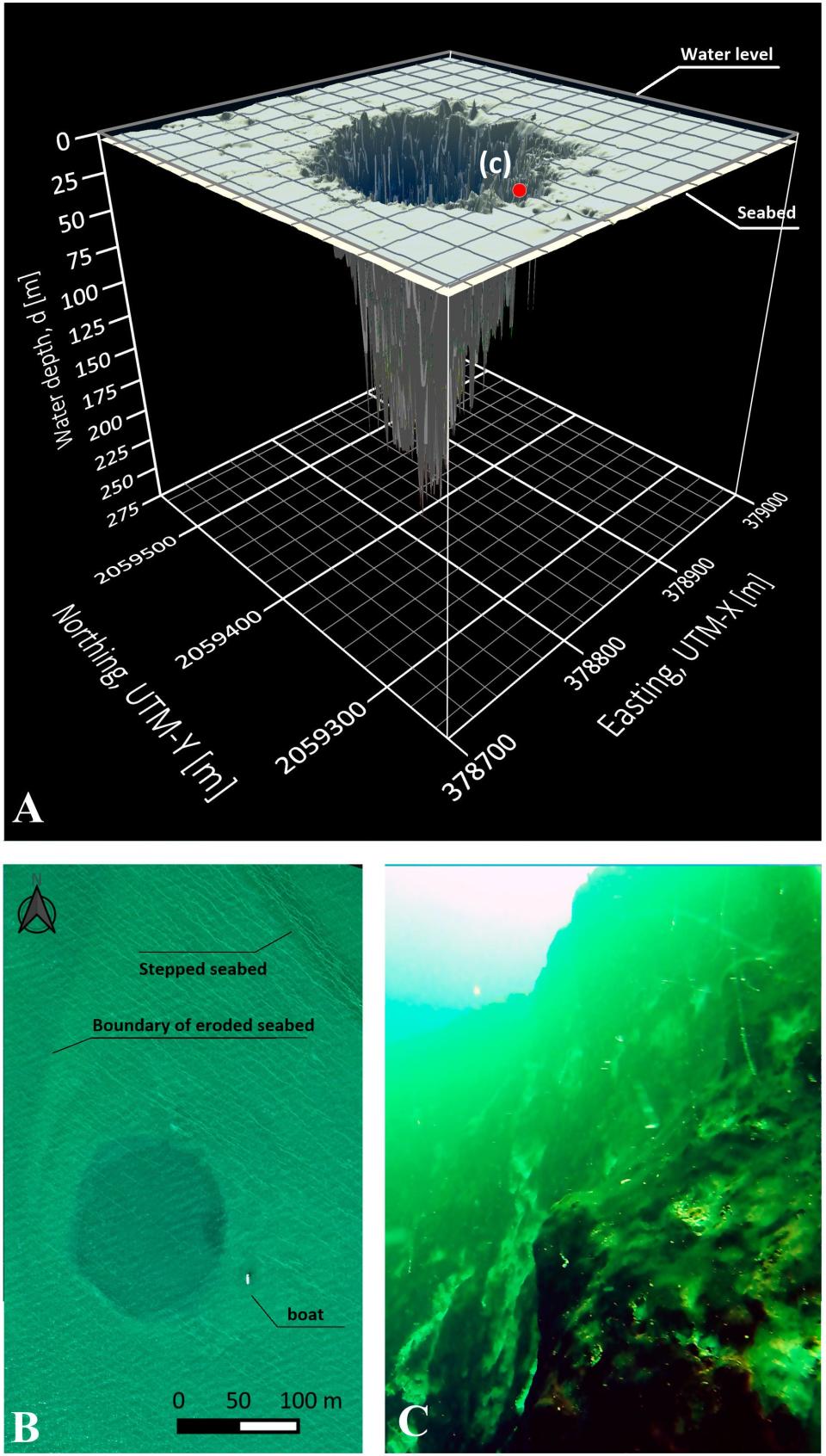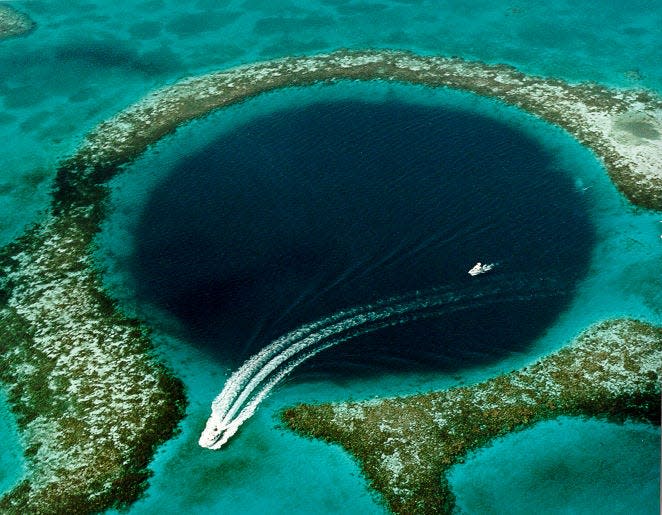They found a hole in the ocean near Mexico, and you could fit all of Bank of America's skyscraper HQ into it — but don't do that because it's an ecological marvel
There's a 900-foot deep hole, now called The Taam ja' Blue Hole, off the Eastern coast of Mexico.
It's the second deepest blue hole known. The deepest is the Sansha Yongle Blue Hole near China.
Studying Taam ja' could help us understand our climate's past and maybe our future.
There's a 900-foot hole in the ocean off the Eastern coast of Mexico. The top of it is a near exact circle and covers an area of nearly 150,000 square feet.
Just that area alone is three times the size of the mansion Michael Jordan has been trying (and failing) to sell for 10 years.
The hole is new to us, but not exactly new.
Two years ago a local fisherman named Jesus Artemio Poot Villa helped scientists from a research center in Mexico discover the spot. Now those scientists have published a study about it in the journal Frontiers in Marine Science.

They're calling it Taam ja', which means "deep water" in Mayan. The hole is in Chetumal Bay, most of which is about 6 to 16 feet deep.
Taam ja' is the second-deepest blue hole we know about. The deepest is the Sansha Yongle Blue Hole near China. The Caribbean actually has a bunch of these, but none so deep.
And 900 feet is really deep!

The 60-story Bank of America Corporate Center in Charlotte, North Carolina, is the tallest skyscraper in the American South, and it's only 871 feet. So you could probably fit it in there.
You wouldn't actually want to stick a skyscraper in the hole, because scientists are very excited to explore it, which they say could help them better understand Earth's climate a thousand years ago. (Studying climate history can help us better predict how the climate crisis could affect us and the planet.)

There's also a lot of life in these things. When it announced plans to explore another blue hole near Florida, NOAA wrote: "Blue holes are diverse biological communities full of marine life, including corals, sponges, mollusks, sea turtles, sharks, and more."
So, yes, to scuba trips to Taam Ja'; no to stuffing skyscrapers down there.
Read the original article on Business Insider

